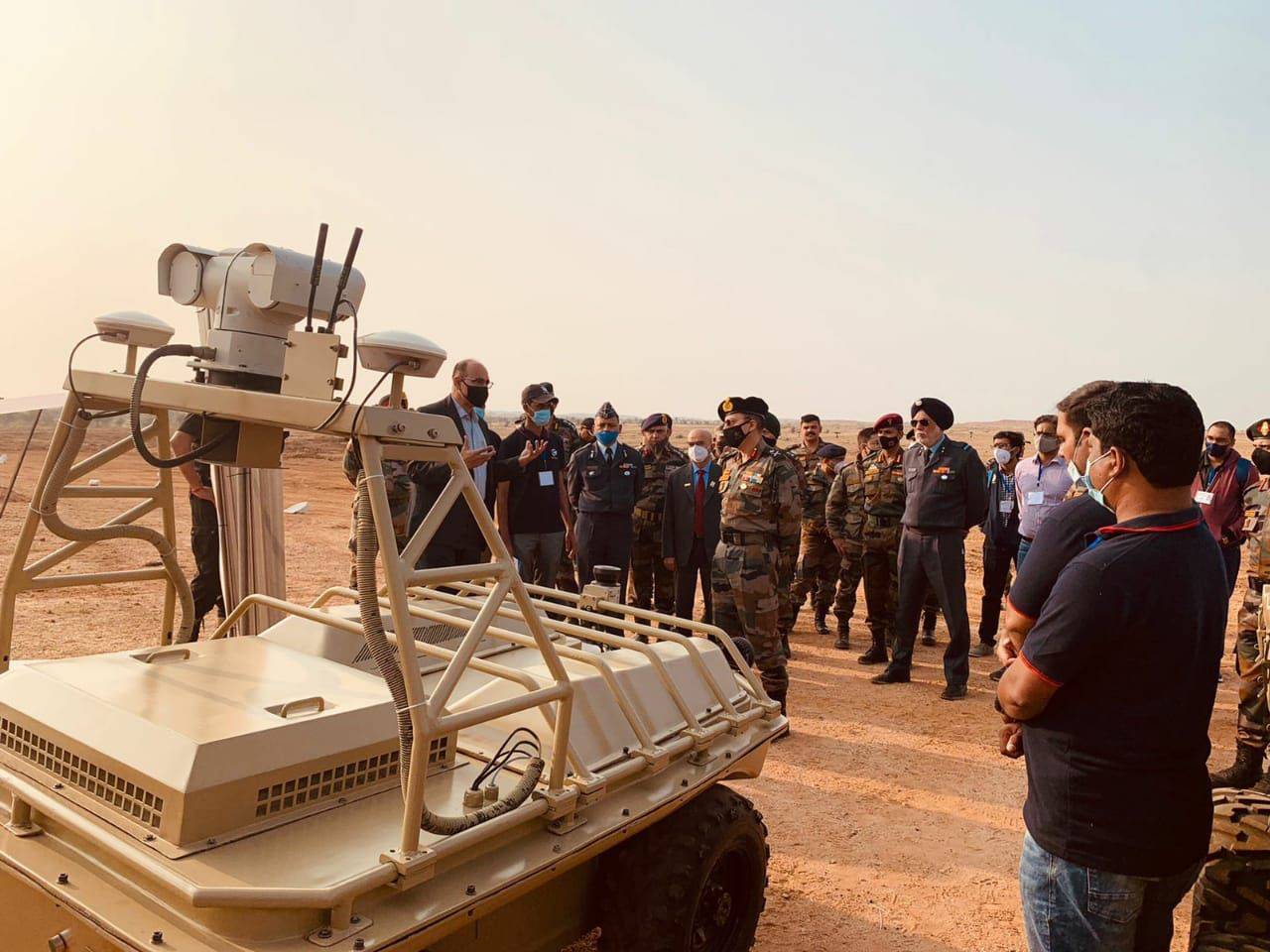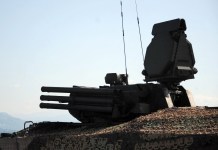India’s Defense Research and Development Organisation (DRDO) is seeking to develop a new combat unmanned ground vehicle (UGV) modeled on Arjun Mk 1A main battle tank to reinforce the country’s foothold on the western borders.
The DRDO’s Chennai-based Combat Vehicles Research and Development Establishment (CVRDE), which manufactured the Arjun MBT currently in service with the Indian Army, has suggested a strategy to “design, develop, and validate” the new tracked combat UGV, the report said, citing DRDO’s Technology Focus bulletin for April.
The combat UGV will be equipped with a 120 mm main gun as its primary weapon, similar to the Arjun MBT, as per the DRDO publication.
It will use an INDIGIS (Indigenous Geographic Information System) to enable the UGV pilot a “visual perspective” of the platform’s location and operational terrain. The combat UGV will be deployed near India’s border with Pakistan in the western Rajasthan desert region, the report said.
Indian Army’s Requirements
Last year, the India Today portal reported that the Indian army is looking for unmanned platforms that can operate in high-altitude regions to assist infantry troops. The interest to acquire UGVs capable of operating in high-altitude areas was considered part of India’s effort to strengthen its defensive capabilities in the face of rising tensions near its border with China.
The army’s requirement for the new UGVs, according to India today’s report, is that they should be suited for military missions such as surveillance, reconnaissance, targeting enemy positions, delivering crucial supplies, and performing fast evacuations. A machine gun should also be carried by the platform to support war missions, especially along India’s northern frontiers.

The UGV should be able to operate in a variety of ground conditions, including deserts, plains, hills, and high-altitude environments, according to the army’s specifications. The army expected the vehicles to be able to be controlled remotely as well as autonomously.
Furthermore, unmanned vehicles can also be utilized for explosive detection and improvised explosive device neutralization. The army has said that a robotic arm capable of lifting a minimum of 5 kg is essential. It should also be able to lay explosives and carry out remote detonations of recognized IEDs and mines, according to the criteria.
In an experiment called Strike (Surveillance, Tactical Recce, Intelligence, Kinetic Effect & Evacuation), 12 Indian companies demonstrated 35 such platforms to the Indian Army in Babina from December 9 to 13 of last year.
Current Developments of UGVs
India’s state-run Defense Research and Development Organisation (DRDO) has long been a leading developer of indigenous UGVs. A total of four UGV development laboratories have been identified within the DRDO.
These included the Center for Artificial Intelligence & Robotics (CAIR), Bengaluru, Combat Vehicles Research & Development Establishment (CVRDE), Chennai, Research & Development Establishment Engineers (R&DE{E}), Pune, and Vehicle Research & Development Establishment (VRDE), Ahmednagar.
In September 2017, CVRDE began developing a teleoperated BD50 Dozer, based on the in-service BD50 BullDozer, in response to Indian Army demands, to save human lives during landslides and snow removal activities in diverse high altitude areas.
The IA then conducted a trial evaluation of the UGV in mountainous terrain. Certain points of contention were raised, and they are now being addressed.
The Ministry of Defense project Innovations for Defense Excellence (iDEX), which aims to encourage innovation and entrepreneurship in the defense industry, has also had a positive response in the field of UGVs.
Apart from the DRDO, several private sector companies are also developing UGVs for the Indian armed forces. Bharat Forge’s unmanned ground vehicle (UGV) was fielded at the Army Technology (ARTECH) Seminar-2018.
The Indian Army then conducted a trial evaluation of this machine. Following that, advice on proposed payloads was sought from various Arms/Services and Army Commands. The business again displayed its UGV at Defense Expo 2020.

‘Sooran,’ an armored, remote-controlled 500-kilogram multi-terrain, all-wheel-drive UGV with a mounted gun-turret, was also unveiled at Defense Expo 2020 by a Chennai-based startup. The UGV is AI-enabled and can be controlled in three ways: remotely, from a mobile control station, or autonomously. Long-range cameras are also installed aboard the UGV for monitoring and reconnaissance.
Another Chennai-based start-up, Torus Robotics in collaboration with the Army Design Bureau has developed a Mobile Autonomous Robotic System (MARS) UGV for the Indian Army. According to the company, the electric-powered UGV is capable of detecting, identifying, and disposing of improvised explosive devices (IEDs) from a distance of 1 km. Reconnaissance and intelligence gathering are also possible with the UGV.
After being approved by the DRDO, the UGV was exhibited at Aero-India 2021 in February. At the same event, the start-up struck an agreement with the Indian government to collaborate with Bharat Earth Movers Ltd (BEML) to build an enhanced version of the UGV capable of carrying a load comparable to ten soldiers in high-altitude terrain.
- Contact the author at ashishmichel@gmail.com
- Follow EurAsian Times on Google Newsa




